Fire Factors
 SPACE HEATER FIRE SAFETY
SPACE HEATER FIRE SAFETY
SPACE HEATER FIRE IN 2002: Thirteen space heater fires were reported to the Office of the State Fire Marshal in 2002. These fires caused one civilian death, three civilian injuries, one firefighter injury and an estimated dollar loss of $635,250.00. Sixty-nine percent (69%) of these fires were caused when combustible materials such as bedding, rubbish or furniture that were too close to the heater, and another 15% were caused by other electrical failure such as an overloaded extension cord.
SAFETY TIPS
- If you must use a space heater for heat, use it as safely as possible.
- When buying a heater, look for one that has been tested and labeled by a nationally recognized testing company.
- Keep the heater away from drapes, furniture or other flammable materials. Place it on a level surface away from areas where someone might bump it and knock it over.
- If you must use an extension cord, make sure it is a heavy duty cord marked with a power rating at least as high as that on the label of the heater itself. (These are usually orange colored.)
- Never leave a space heater unattended or running while you sleep.
- Keep electric heaters away from water. Never use them near a sink or in the bathroom.
- The sale and use of unvented kerosene heaters is illegal in Massachusetts.
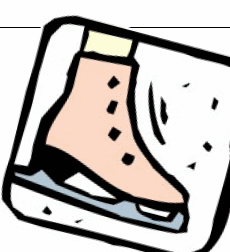 ICE AND COLD WATER SAFETY
ICE AND COLD WATER SAFETY
Each winter, many residents are injured from exposure in cold water incidents. Skaters and ice fisherman fall through the ice: boaters and canoeists overturn their crafts.
According to the U.S. Coast Guard, each year there are over 7,000 drownings and 20,000 near-drownings in the United States. Over half of these incidents occur in cold water, (water less than 70 degrees F.).
HOW THICK IS "SAFE" ICE?
Ice on moving water in rivers, streams and brooks is never safe. The thickness of ice on ponds and lakes depends upon water currents or springs, depth and natural objects such as tree stumps or rocks. Daily changes in temperature cause the ice to expand and contract, which affects its strength. Because of these factors, no one can declare the ice to be absolutely "safe".
The only "safe" ice is at a skating arena!
WHAT DO YOU DO IF SOMEONE FALLS THROUGH THE ICE?
- ACT QUICKLY AND CALL 911 FOR HELP IMMEDIATELY. Make sure properly trained and equipped rescue personnel are alerted to respond.
- DO NOT GO OUT ONTO THE ICE. Many times would-be rescuers become victims themselves.
- REACH, THROW OR ROW. Extend a branch, pole or ladder to the victim. Throw them a bouyant object, such as a life ring or float tied to a rope. If a boat is nearby, row out to the victim or push it toward them.
HOW COLD IS COLD WATER?
- Any water that is cooler than normal body temperature (98.6 F) is by definition "cold water".
- Cold water drains away body heat 25 to 30 times faster than air!
- Cold water does not have to be icy, it just has be be colder than you are to cause hypothermia.
- The lower the temperature of the water, the faster the onset of hypothermia.
WHAT IS HYPOTHERMIA?
Hypothermia is the excessive lowering of body temperature. A drop in core body temperature below 95 degrees F., causes shivering, confusion, loss of muscle strength, and if not treated and reversed hypothermia lead to unconsciousness and death.
Safety experts estimate that half of all drowning victims die from the fatal effects of cold water, not the fatal effects from water-filled lungs!
PERSONAL SAFETY TIPS
- Always wear a personal floatation device (PFD) when boating, any time of the year.
- Waterlogged clothing makes it difficult to keep your head above the surface of the water.
- Dress properly.
- Keep your head covered, 50% of body heat is lost through the head. Clothing that is made from man-made fibers does not protect the wearer for long when wet. Wool insulates better from the effects of hypothermia when dry or wet.
- If you fall into cold water, get into HELP (Heat Escape Lessening Position).
- Bring your knees to your chest, hold your arms to your sides and clasp your hands, and cover your head if possible to protect your body from heat loss.
- DO NOT try to swim unless a boat, floating object or the shore is close by. Swimming causes, "warm" blood to circulate to your arms and legs, where it cools off quickly and reduces survival time by as much as 35-50%!

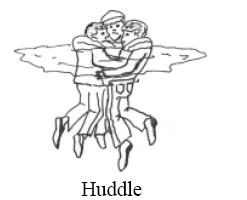
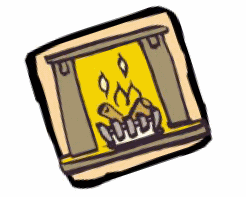 CHIMNEY AND WOODSTOVE FIRE SAFETY
CHIMNEY AND WOODSTOVE FIRE SAFETY
In 2001, there were 665 fire incidents involving solid fueled appliances, fire places, and chimneys. These fires were responsible for 20 injuries, 1 fire death and resulted in $3.2 million in property losses. These incidents make up 45% of all fires linked to heating systems.
PURCHASING
Be sure the stove you are purchasing to burn wood or coal is approved by Underwriter's Laboratory or another recognized testing laboratory.
INSTALLATION
- A building permit must be obtained prior the installation of fireplaces, wood or coal burning stoves, and must be inspected by the local building inspector prior to their initial use, as required by the Massachusetts State Building Code.
- Allow at least 36 inches of clearance around the appliance to prevent combustibles from coming into contact with a heat source.
- Solid fuel heating appliances cannot share a common flue with chimney flues utilized by other solid fuel, fossil fuel, or gas fired appliances.
INSPECTIONS
Have the chimney and flue inspected by a qualified mason prior to use. Cracks in the flue or mortar joints can allow flames and heated gases to extend into the structure.
PROPER US
Most chimney fires occur due to a build-up of creosote, a tarry by-product of burning wood. Have your chimney flue cleaned before each heating season. Burn only dry, well-seasoned, hardwood to reduce creosote accumulation.
- Do not use flammable liquids to start the fire.
- Never leave children unattended near the stove.
- Check that the damper is open before lighting the fire. Failure to do so can result in an accumulation of smoke and carbon monoxide within the home. Do not close the damper before the fire has died out and the embers are cold.
- Use a fireplace screen to prevent flying sparks and embers from falling out onto the floor.
- Install and maintain smoke alarms and carbon monoxide detectors to provide protection for your family.
PROPER ASH DISPOSAL!
Ashes cleaned out form the stove or fireplace should be shoveled into a metal bucket with a metal lid, placed outside, on the ground, away from the building, to prevent fires. Do not place ashes into a paper bag or cardboard box. Ashes and embers can stay hot for days and ignite combustibles.
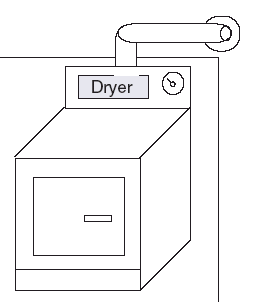 PREVENT DRYER FIRES
PREVENT DRYER FIRES
In 2002, 1/4 of the clothes dryer fires occurred in 1 & 2 family homes and one fire caused the death of a 72 year old disabled man.
CLEAN THE FILTER SCREEN AFTER EACH LOAD
This will keep the vent clear. When accumulated lint clogs the vent, the dryer can overheat and a fire could result.
STAY HOME WHILE THE DRYER IS IN USE
Turn off the dryer before leaving the house.
CLEAN VENTS TO OUTSIDE
Twice a year you should clean the plastic hose pipe that vents to the outside. Use the vacuum cleaner to suck out accumulated dust and lint.
VACUUM THE MOTOR AREA
The dust and lint in the vent pipe can ignite if it gets hot enough. Vacuum the motor area if you can get to it. You may have to remove a panel to get at it.
CLEAN COMMERCIAL DRYER VENTS REGULARLY
Commercial dryers get a lot of use and will have a common venting system. It is extremely important to have the vent systems cleaned regularly.
DON'T DRY MOP HEADS
The dryer's heat can ignite the cleaning chemical residue on mop heads.
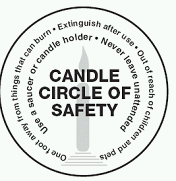 PREVENT CANDLE FIRES FOLLOW THE CIRCLE OF SAFETY
PREVENT CANDLE FIRES FOLLOW THE CIRCLE OF SAFETY
BURN CANDLES INSIDE A ONE FOOT CIRCLE OF SAFETY, AN AREA FREE OF ANYTHNG THAT COULD COME IN CONTACT WITH THE FLAME.
Use candles in the center of an area one-foot in diameter free of anything that could burn, such as decorations, curtains that could blow around, other items on a table or bureau. Use a sturdy metal, glass or ceramic container.
STAY IN THE SAME ROOM WITH BURNING CANDLES: NEVER LEAVE THEM BURNING UNATTENDED.
Most candle fires start when they are left burning unattended. Don't leave a candle burning out of your sight or when you fall asleep at night.
USE CANDLES OUT OF REACH OF CHILDREN AND PETS
Many candle fires are started when pets knock them over, or when children touch or play with them.
KEEP ALL MATCHES AND LIGHTERS OUT OF REACH OF CHILDREN
Store in a high cabinet, preferably a locked one. You wouldn't leave a loaded gun lying around and a lighter can be just as dangerous in a child's hand.
TEACH EVERYONE IN THE FAMILY THE RULES OF SAFE CANDLE USE
Children, teenagers, grown-ups and older adults should know the rules of safe candle use.
CANDLE FIRES HAVE TRIPLED IN MASSACHUSETTS OVER THE PAST DECADE
Candle use has risen greatly in the past decade, but unfortunately so have candle fires. They have more than tripled in Massachusetts in the past ten years.
CANDLES HAVE BECOME ONE OF THE LEADING CAUSES OF FIRE DEATHS IN THE HOME IN THIS STATE
Several people are killed, usually in their own homes, from candle fires each year.
MAJOR STORM SAFETY
PREVENT FIRES, ELECTRICAL SHOCK AND CARBON MONOXIDE POISONING WHEN COPING WITH A DISASTER. USE FLASHLIGHTS INSTEAD OF CANDLES IF THE POWER GOES OUT. STOCK UP ON BATTERIES.
Use flashlights instead of candles that can easily start a fire. Candle fires have more than doubled in the past decade and have turned deadly during power outages when smoke alarms also may not work.
GIVE YOUR SMOKE ALARMS FRESH BATTERIES
A working smoke alarm can double your family's chances of surviving a fire. Make sure your smoke alarms have fresh batteries. Install a battery operated or battery back-up smoke alarm if you only have hard-wired ones.
MAKE AND PRACTICE A HOME ESCAPE PLAN, WITH TWO WAYS OUT AND AN OUTSIDE MEETING PLACE
Teach your home's escape plan to your holiday guests and if you are visiting friend's and relatives, ask about the escape plan and meeting place for their house.
USE CAUTION WITH ALTERNATIVE HEATING AND COOKING APPLIANCES
During windy conditions, a sudden downdraft could blow the fire out of the fireplace into your room. Always use a screen to keep sparks and embers contained.
DO NOT USE A CHARCOAL OR PROPANE GRILL INSIDE THE HOME. THIS COULD POSE A CARBON MONOXIDE OR AN EXPLOSION HAZARD.
MAKE SURE YOUR HOME FIRE EXTINGUISHER IS HANDY AND FULLY CHARGED.
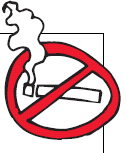 SMOKING AND HOME OXYGEN SYSTEMS
SMOKING AND HOME OXYGEN SYSTEMS
" Some People Don't Know When to Quit"
Many people with respiratory problems now use home oxygen systems. Unfortunately, some people smoke while on oxygen which can be deadly to them and to people around them.
OXYGEN HELPS FIRE SPREAD FAST!
Oxygen increases the speed at which things burn once a fire starts. Home oxygen therapy increases the amount of oxygen in the environment. It will saturate clothing, fabric, hair, beards and anything in the area. Even flame-retardant clothing can burn when the oxygen content increases.
- Never smoke or light a match while using oxygen.
- Keep all flames and heat sources away from oxygen containers and oxygen systems.
- Do not allow smoking inside of a home where oxygen is used. Even if it is not being used at a particular moment, the home is still an oxygen enriched environment, and fire can get out of hand quickly.
FOR HEALTH CARE PEOPLE
Before sending a patient home on oxygen, health care providers must make sure the patient understands the dangers of smoking in an oxygen enriched environment. Smokers should be asked about their intentions. If they are unwilling to quit, the risk of fire can outweigh the benefit of oxygen therapy.
TOO MANY PEOPLE INJURED AND KILLED
- On October 28, 2002, a fire occurred in the home of a 56 year old Boston man, a smoker with lung disease, utilizing a home oxygen therapy system. The fire, caused by a dropped cigarette, ignited combustibles and caused an oxygen tank to rupture which accelerated the blaze. The fire claimed the life of his 8 year old daughter.
- On October 30, 2002, a 62 year old male resident in a South Shore nursing facility suffered life threatening burns to the face when he lit a cigarette while on oxygen.
- On August 22, 2002, a 56 year old Greenfield man received 2nd and 3rd degree burns to the face, mouth, tongue and hands when he lit a cigarette while on oxygen in his home.
- On August 18, 2002, an 81 year old Boston woman on oxygen and confined to her bed, died in a fire caused when she ignited her bedding and clothes while attempting to light her cigarette.
- On August 11, 2002 a 77 year old Athol woman died in a house fire when she lit her cigarette and ignited the oxygen tubing to her home therapy equipment.
- On August 9, 2001 a 62 year old Plainville woman, on home oxygen, died when she fell asleep in a chair and dropped her cigarette, catching fire to her clothes.
PEOPLE ON HOME OXYGEN THERAPY NEED TO PLAN AND PRACTICE HOME FIRE ESCAPE DRILLS
Individuals, family members and medical personnel can assist in identifying the patient's physical limitations and assess their ability to escape from the residence on their own in the event of a fire.
MAKE SURE THE HOME IS EQUIPPED WITH WORKING SMOKE DETECTORS
- Have the detectors tested at least once a month.
- Change detector batteries at least once a year.
- Specialized smoke detectors are available for the hearing impaired.
PLAN TWO ESCAPE ROUTES FROM EACH ROOM
- Make sure the escape path is clear and remove any obstacles.
- Arrange for special care or assistance if the patient is immobilized.
- PRACTICE THE ESCAPE PLAN WITH THE PATIENT AT LEAST TWICE A YEAR. CALL 911 TO SUMMON HELP IF NEEDED
- Keep a phone by the bed or favorite chair.
- Wear a medical alert alarm.
Since 1997, 16 people have died and 20 other individuals have suffered severe burns or smoke inhalation in fires involving people who were smoking while using home oxygen systems.
Please don't become another grim statistic, keep open flames and smoking materials away from oxygen therapy equipment.
Information was obtained from the Office of the State Fire Marshal

